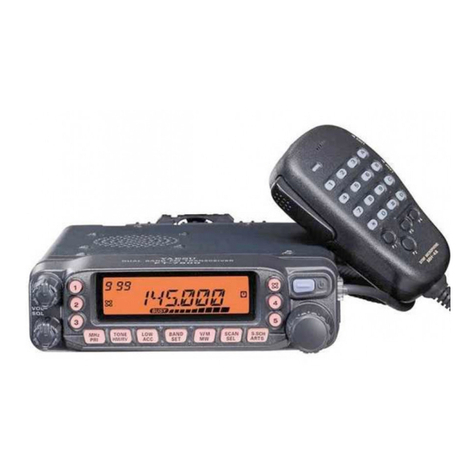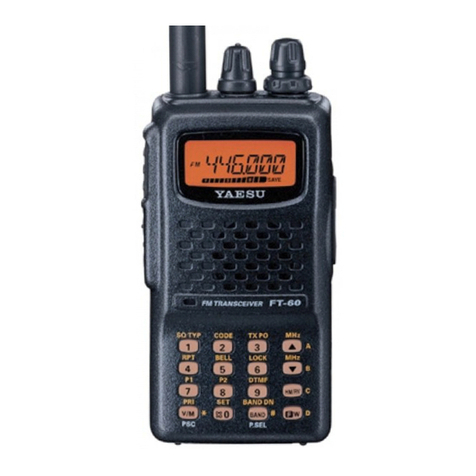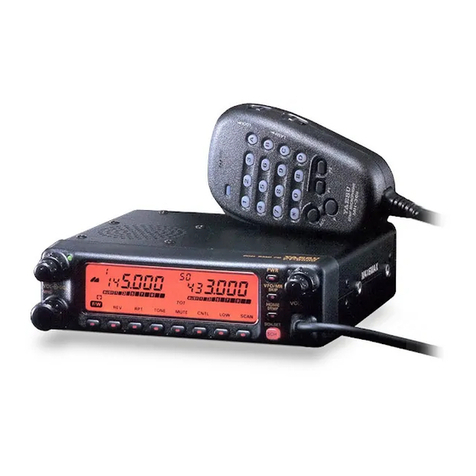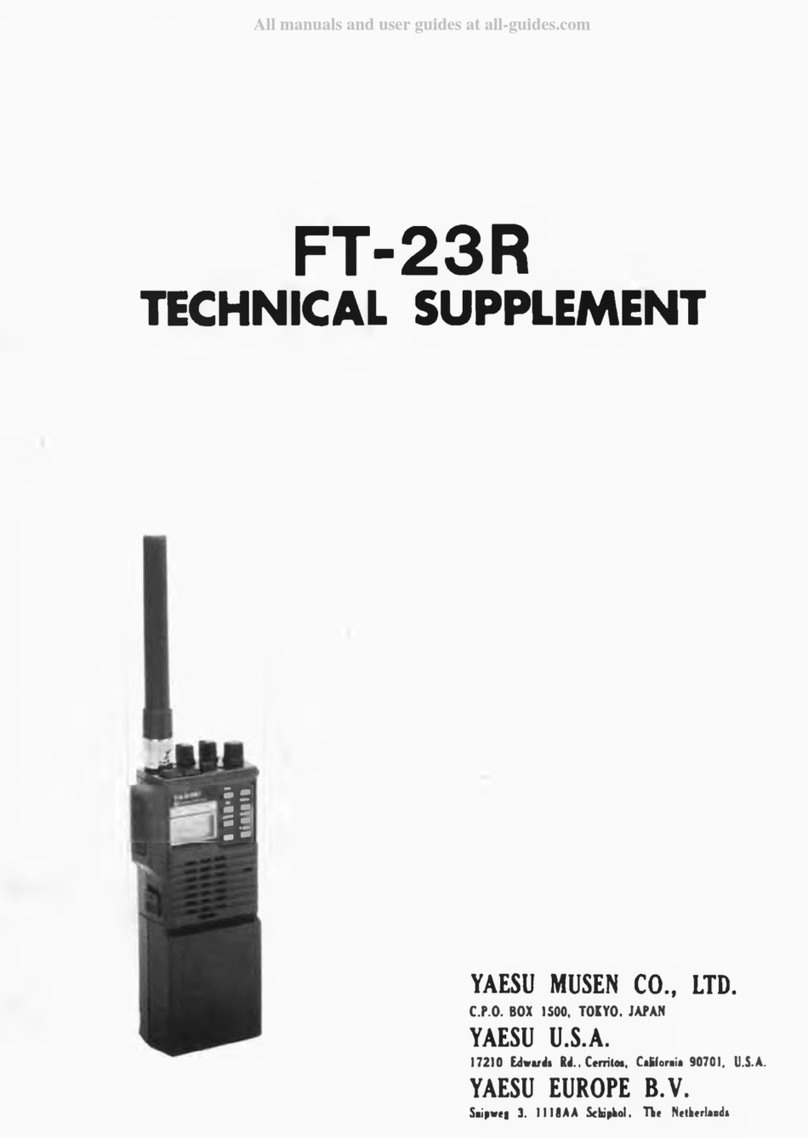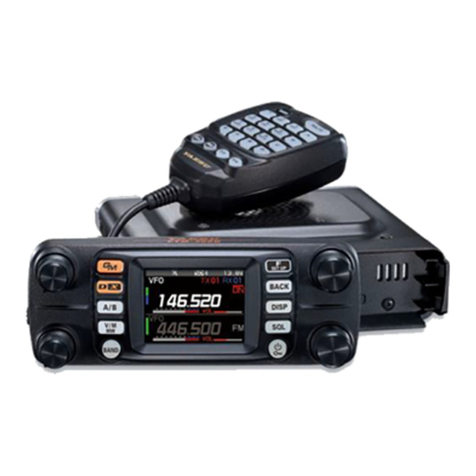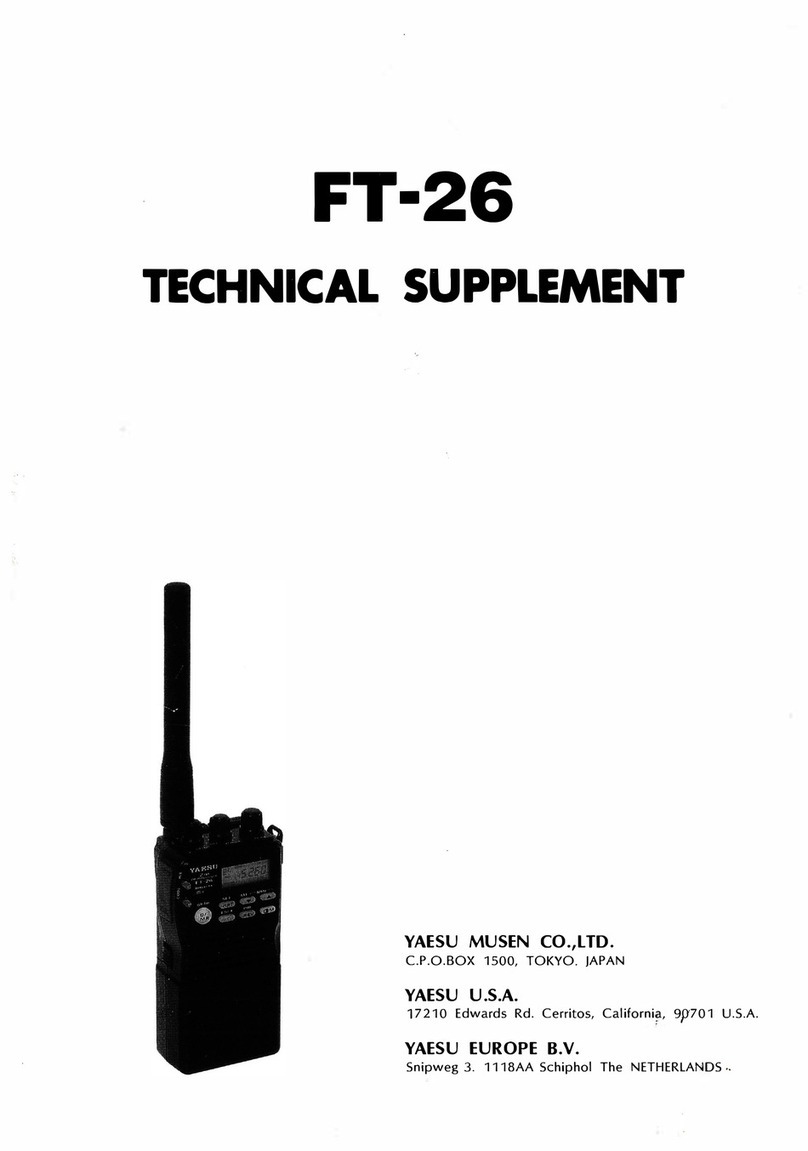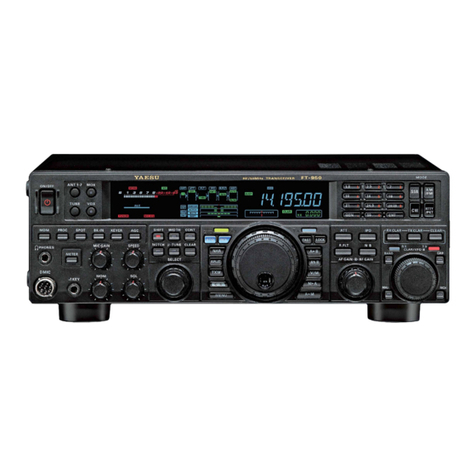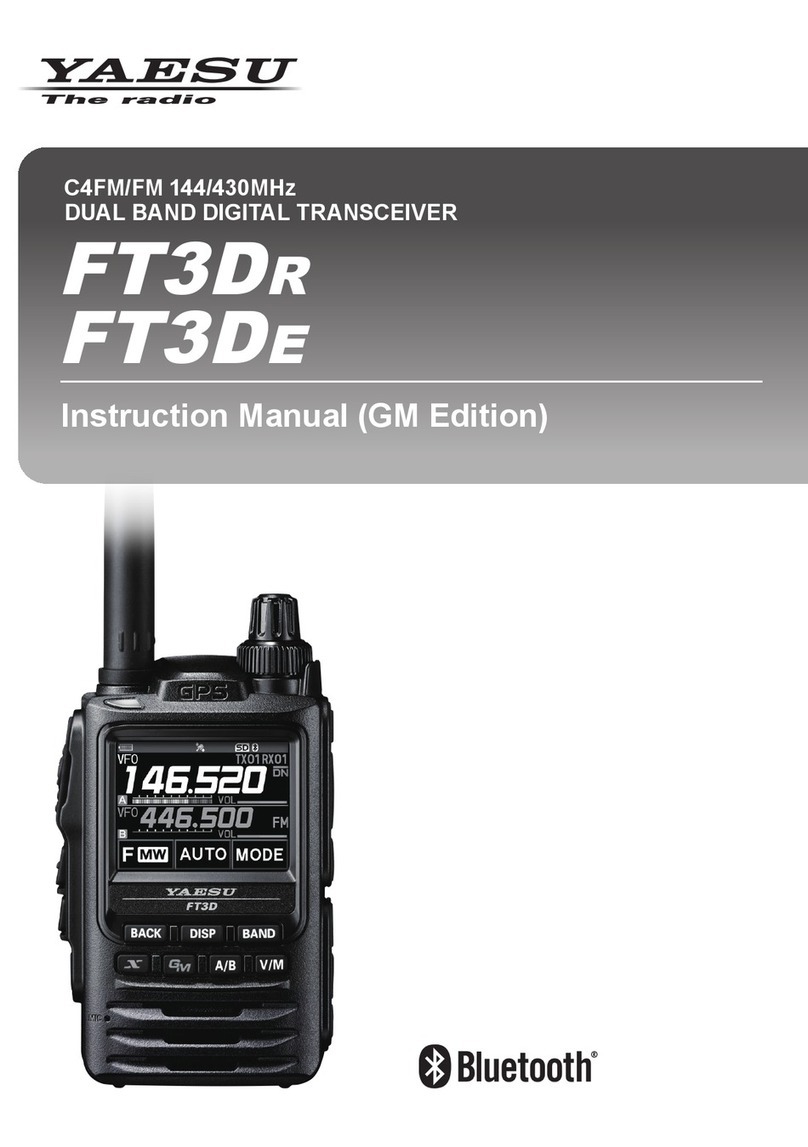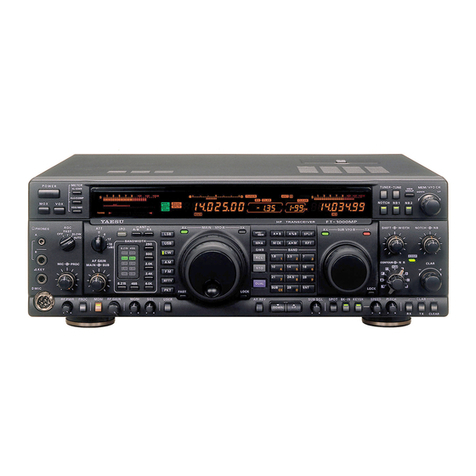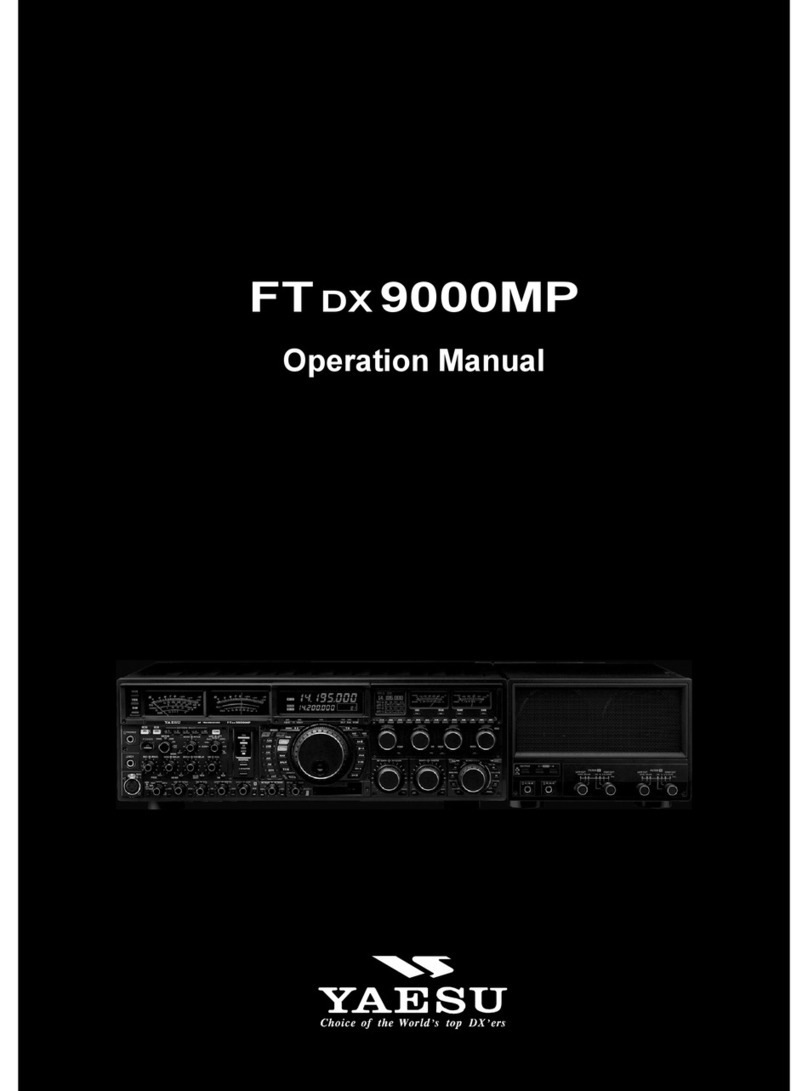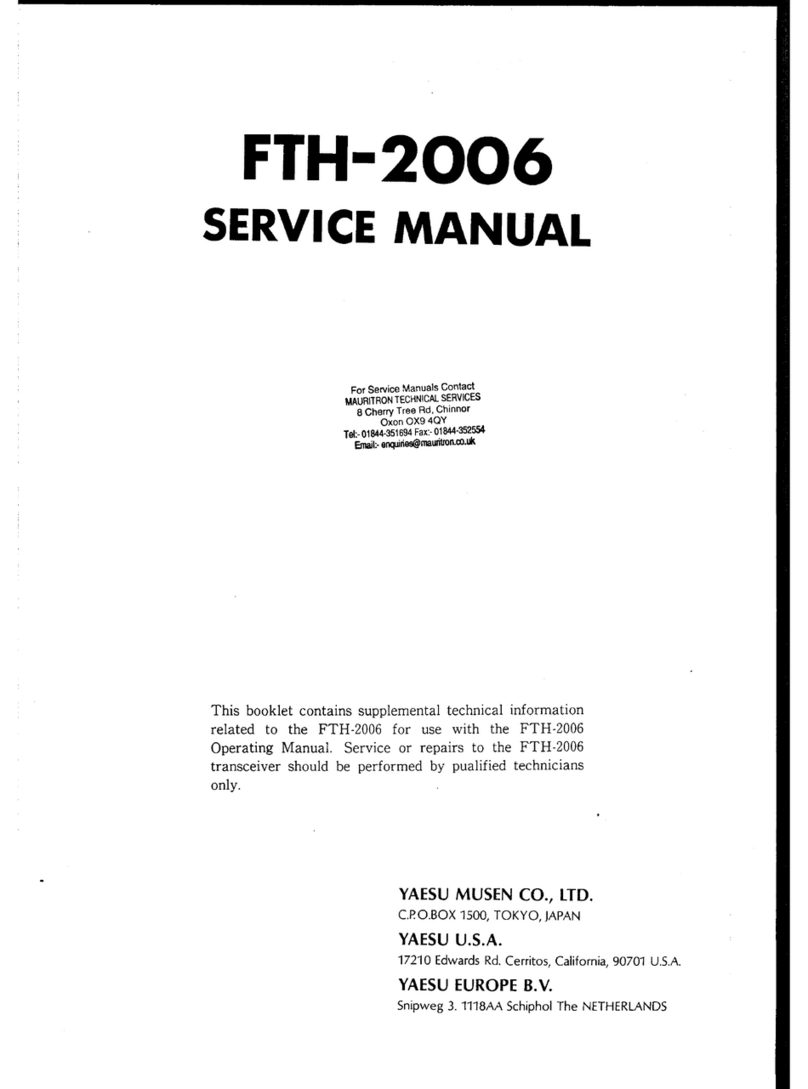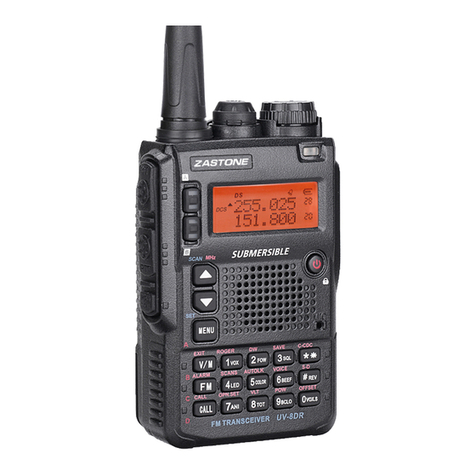
2
Contents
FTM-3100R Advance Manual
Basic Operation.............................................................................................................. 3
Microphone Gain Setting................................................................................................ 3
RF Squelch .................................................................................................................... 3
Advanced Operation ...................................................................................................... 4
Programming the Key Assignments ............................................................................... 4
Tone Search ................................................................................................................... 6
DCS Search ................................................................................................................... 7
EPCS (Enhanced Paging & Code Squelch) Operation.................................................. 8
Storing CTCSS Tone Pairs for EPCS Operation.......................................................... 8
Activating the Enhanced Paging & Code Squelch System .......................................... 9
DTMF Operation .......................................................................................................... 10
Transmitting a DTMF code manually ......................................................................... 10
Registering a DTMF code .......................................................................................... 11
Transmitting the registered DTMF code..................................................................... 12
Setting DTMF Autodialer sending Speed................................................................... 12
Setting DTMF Autodialer TX delay time..................................................................... 13
Memory Operation........................................................................................................ 14
Split Memory ................................................................................................................ 14
Moving Memory Data to the VFO.............................................................................. 14
Memory Only Mode...................................................................................................... 14
Naming a Memory Channel ......................................................................................... 15
Scanning ....................................................................................................................... 16
Scan Resume Options ................................................................................................. 16
Memory Skip Scanning ................................................................................................ 17
Preferential Memory Scan............................................................................................ 18
Programmable Memory Scan (PMS) ........................................................................... 19
Registering to the programmable memory channels ................................................. 19
Scanning the programmable memory channels ........................................................ 20
Band Edge Beeper....................................................................................................... 20
Priority Channel Scanning (Dual Watch)...................................................................... 21
Priority Revert Mode .................................................................................................. 21
Clone.............................................................................................................................. 22
Setup (Menu) Mode ...................................................................................................... 23
Menu Selection Details ................................................................................................ 26

